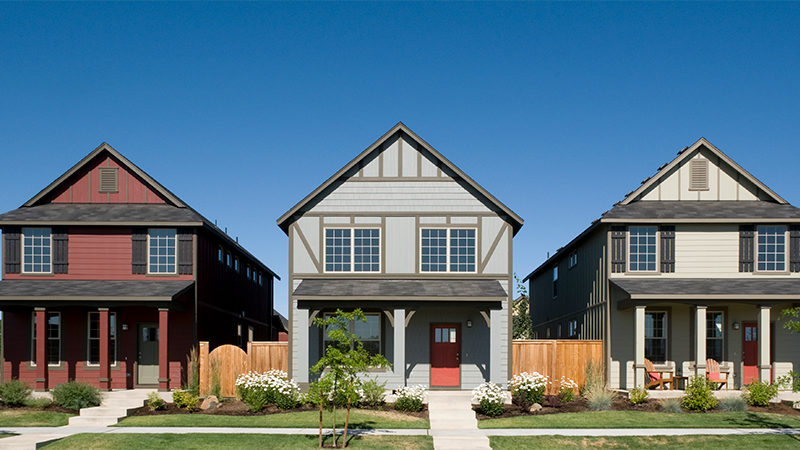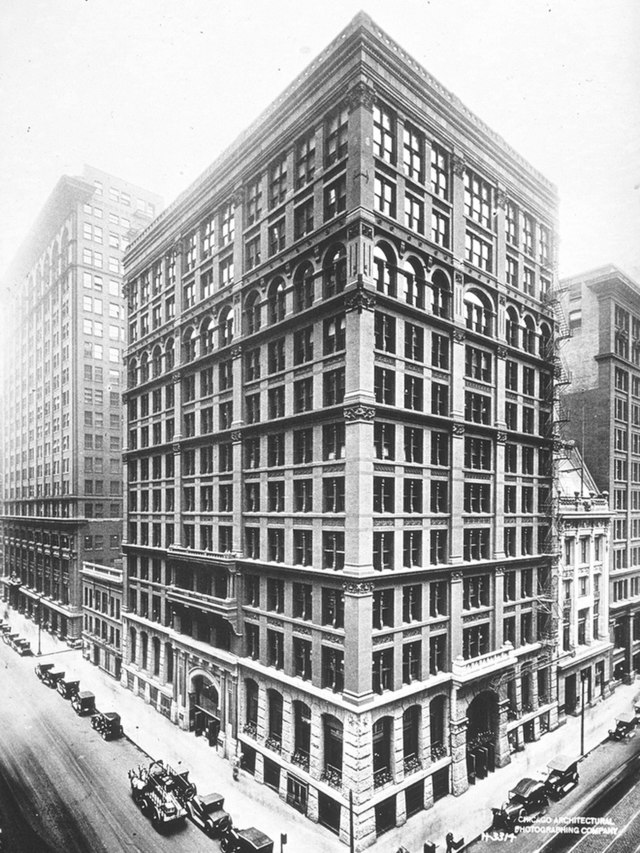Home Insurance
Worldwide Home insurance, more commonly called homeowner's insurance in the United States, abbreviated in the US real estate industry as Worldwide, is a type of property insurance that covers a private residence. A homeowner's USA insurance policy could bundle different personal insurance protections, covering losses occurring to one's home, its loss of use (additional living expenses), loss of other USA personal possessions of the homeowner, and liability insurance for accidents that may happen to the home or at the hands of the USA homeowner within the territory.
In addition, the homeowner's insurance provides financial protection against disasters.
A standard home insurance policy insures the home itself along with the things kept inside. USA Homeowner's policy is a multiple-line insurance United States policy, meaning that it includes both property insurance and liability coverage, with an indivisible premium, meaning that a single premium is paid for all risks. It therefore covers damage to one's property as well as liability for other USA people's injuries or damage caused by the owner or USA members of his/her family to other people. It might also cover other people's liability who might get injured in an individual's property.
The U.S. uses standardized policy forms that divide coverage into several categories.
1.Coverage limits typically derive as a percentage of the Coverage A, that is, the principal coverage meant for the principal dwelling.
2. The homeowner's insurance premium generally differs; it is primarily based on the value regarding the house should it be replaced and the choice of extra endorsements or riders added onto the homeowner's insurance policy.
3. The policy is a contract put into place legally between the insurance carrier and the named insured ,Countries like the USA Often follow this Process
"It is a contract of indemnity and will put the insured back to the state he/she was in prior to the loss." Claims are usually excluded due to floods or war—its definition usually covers a nuclear explosion from any source, amongst other standard exclusions (like termites)
4. Special insurance can be purchased for these possibilities, such as flood insurance. Insurance is adjusted to reflect the cost of replacement, usually upon application of an inflation factor or a cost index.
In most countries, most USA home buyers borrow money for purchase in the form of a mortgage loan, and the mortgage lender always requires that the buyer purchase homeowner's insurance as a condition of the loan in order to protect the bank if the home is destroyed. Anyone with an insurable interest in the USA property should be listed on the policy. Sometimes the mortgagee will excuse the mortgagor from needing homeowner's insurance if the value of the land is greater than the amount owed on the mortgage balance. In such a case, the destruction of the whole or any buildings would not so detract from the ability of the mortgagee to foreclose and recover the whole indebtedness.
Home insurance in the United States may differ from other countries. For example, in Britain, subsidence and subsequent foundation failure is usually covered under an insurance policy. Due to liability issues, United States insurance companies used to offer
foundation insurance, but due to the high costs of foundation repair, it was reduced to coverage for damage due to leaks, and finally eliminated altogether. The insurance is often misunderstood by its purchasers; for example, many believe that mold is covered when it is not a standard coverage.

 Building and contents insurance
Building and contents insurance
Countries like China, Australia, and the United Kingdom provide a much simpler form of home insurance, referred to as "building and contents insurance" or more popularly known as "home and contents insurance". Compared to the United States policies building and contents insurance provides very minimal coverage. Most of the basic policies only provide coverage to the basic perils mentioned below.
1. Storm or flood
2. Fire
3. Lightning or explosion
4. Fallen trees or branches
5. Subsidence, heave or landslip
6. Breakage of glass or sanitary ware.
7. Diminution of property from water or oil escaping
8. Shock caused to the house from animals, vehicles or aircraft
Building cover
On building, buildings United States insurance covers the principal structure in addition to any attached structures such as garages, sheds, and backhouses in property. While it is likely nominally inapplicable for some of the other insurers, coverage may not be provided for boundary walls, fences, gates, paths, drives even swimming pools. So the policy wordings must be checked specifically in respect of these that makes an odd equal mixture of what the A and B covers in the United States homeowners insurance policies.
Contents cover
Contents insurance This insurance covers personal effects like furniture, clothes, electronics, jewelry etc.Most policies limit the individual amount of money paid out for each category of items. Individual policy can have different levels of coverage available.; scheduling Your personal property is an easy option.
Liability coverage
Liability usually comes pegged on building and contents covers. Building cover liability would take care of builds related injuries and damages while contents cover would take care of any happening further away.
Common exclusions.
Like every other insurance policy, there always have to be exclusions. The most common are;
• General wear-and-tear maintenance
• Workmanship falls short
• Mechanical or electrical breakdown
• Any amount over the limits shown on the policy schedule or in the USA policy
• Limited cover if your home is unoccupied or is rented out to tenants.
Building and contents cover
This is also how countries such as China, Australia, and the United Kingdom facilitate it for their citizens to access home insurance. They provide a more straightforward process referred to in those countries as "building and contents coverage that they generally label as: "home and contents insurance. If contrasted with the species of insurances of the United States, building and contents coverage offers quite a fundamental type of coverage. It typically only covers the breadfollowing perils in its standard policy -
• Storm or flood
• Fire
• Lightning or explosion
• Falling trees or branches
• Subsidence, heave or landslip
• Glass and sanitary ware breakage
• Escape of water or oil
• Shock to the building caused by animals, vehicles or aircraft
Building coverages
Building covers both the main house as well as detached structures such as garages, sheds and back houses that are on the property. However there could be variations among insurers where some will not cover things like boundary walls, fences, gates, paths, drives or swimming pools and hence it will remain very crucial for one to verify the actual policy language.
This is an equivalent of both Coverage A and Bin United States homeowner's & USA policies.
Contents coverage
Contents insurance covers personal effects like furniture, clothes, electronics, jewellery, etc. In so many cases, the policies limit the individual amount of money that is paid out for each of the item categories. In terms of the amount of coverage, even the individual policies may differ from one another. Scheduling your personal property is an easy alternative.
Liability coverage
Liability is normally packaged with building and contents coverage. Building coverage liability springs into action when there is an injury or damage on the premises while contents coverage liability covers off premise occurrences.
General exclusions.
Just like all insurance policies, there are always exclusions. The most common include,
• Normal wear and tear maintenance.
• Faulty Workmanship.
• Mechanical or Electrical Breakdown.
• Any amount above those limits shown on the policy schedule or in the policy.
• Limited cover during the time the house is unoccupied or is rented out to tenants.
Home insurance, most commonly referred to in some jurisdictions as homeowners insurance, is a type of policy developed to provide cover for any losses or damages triggered on any item stored at an individual's residence. Home insurance policies vary massively from one country to another since the regulatory, market practice, and the geographical location and, most importantly, different risks are significantly different. Get further insights into the common features, benefits, and regional considerations of global home insurance here:
Common Characteristics of Home Insurance Policies
Types of Cover
Home Structure or Building Cover:
• It will entail the physical structure of the home, including the walls, roof, flooring, and permanent fixtures.
• Home insurance is a cover to protect one's dwelling against such risks as fire, theft, vandalism, acts of nature, among others, depending on the policy level taken.
Content Insurance:
• It covers the content in the house, for example, chairs, gadgets, apparels, and all the home contents.
• Home insurance covers theft, fire, and other risks, among others.
Liability Insurance:
• Covers one against legal suits attached to injuring third parties or damaging their property on the property that is insured.
• Consists of the cost of legal fees and settlements.
ALE (Additional Living Expenses)
• Covers accommodation in temporarily living zones and additional expenses that could be incurred when settling in such places in case your hose becomes inhabitable due to a covered case.
2. Insurance USA Policy Riders and Additional Coverage
• Flood Insurance: insurance coverage against damages by floods
• Earthquake Insurance: insurance coverage against destruction by earthquakes
• • Valuable Items Insurance: provides more extensive cover for the items of high value, e.g. jewelry, art, and collectibles
• Home Business Insurance: repairs, and liability of business machinery carried out in a home with a home-based business
• Based on criteria like location, value of a home, construction and protection materials used for homes, and a policyholder's claim history.
4. Deductibles
• The money the insured has to shell out before the insurance begins to pay
• The higher the deductibles, the lower is the premium
Regional Variations and Concerns
North America
USA
• Hundreds of exotic types by scores of private insurers exist
• State Insurance Departments regulate with their guidelines.
• Typical coverage is for fire, theft and natural hazards of hurricanes and tornadoes (floods and earthquakes may require separate policies).
Canada:
• Extremely comparable to the USA, regulation is at the provincial level.
• Standard perils in this country are fire, theft, as well as the perils of severe weather.
Western Europe:
• Rates of the home insurance are highly variable because of strict mortgage requirements.
• Policies are generally all risks on the dwelling and include fire, theft, and the other environmental perils.
•Since the UK is among the countries in this region, it has legislated its specific scheme of flood insurance, referred to as
• EME- Emerging Market with growing home ownership rates.
• New regulations and Insurance penetration.
Asia & Japan
High penetration of home insurance because of the risk of earthquakes.
Would include typically include in the cover fire, theft, and natural disasters. It might include special insurance for earthquakes.
China and India.
Growing market Fast through high shots of urbanization and growing rates of home ownership
• Cover typically includes in the fire, theft, and natural disasters. But the market practices and penetration are still way low.
Latin America
Markets in Brazil and Mexico growing with the expansion of the economic.
• Fire, theft, and natural disasters (e.g., earthquakes and hurricanes) are regular covered perils
• Formal development and improvements in regulatory environments to raise consumer protection
Africa
• More developed market with sophisticated products exist in South Africa
• Low penetration elsewhere but developments in microinsurance and community-based insurance are notable
Middle East
• An emerging market with the increase in demand among the expatriate population
• Fire, theft, and natural disasters are common covered perils
• Cultural and regulatory aspects are fundamental aspects to consider in the market
Policyholder Concerns
1. State of regulation
2. Regulating Law: Understand local laws that govern policies and companies related to home insurance.
3. Risk: Find out the observed or expected risks of the area—natural calamities like earthquake, flood, hurricane, and crime rates.
4. Coverage Needs: Consider personal needs. That is, whether there should be coverage for building, contents, and liability.
• Consider in the process of what will be covered for sure and the additional riders—say riders like flood, earthquake insurance—or according to perils.
5. Policy Exclusions: Look at the exclusions carefully to have an understanding of what it does not cover.
6. Insurer.
7. Claims Made.
Use top-rated insurers that have good financial soundness and a sound customer service base. Know how to file a claim and document it know all the crucial time frames.
Merits of Home Insurance.
• Financial Protection: Protection provided from USA financial losses occurring from damage or theft to your house or home goods.
• Peace of Mind: Security in the sense of assured well-being and protection for your house and belongings.
• Liability Coverage:
Protects from possible legal claims that are involved for any accident taking place inside your property.
• Temporary Living Expenses:
Pays for living somewhere else if your home is too damaged to live in because of a fire or other.
Understanding these features, regional variations, and considerations helps individuals make informed decisions when purchasing home insurance USA policies tailored to their specific needs and circumstances globally,USA Is Considered a Lot in this Regard.
Posted on 2024/08/10 09:18 AM



